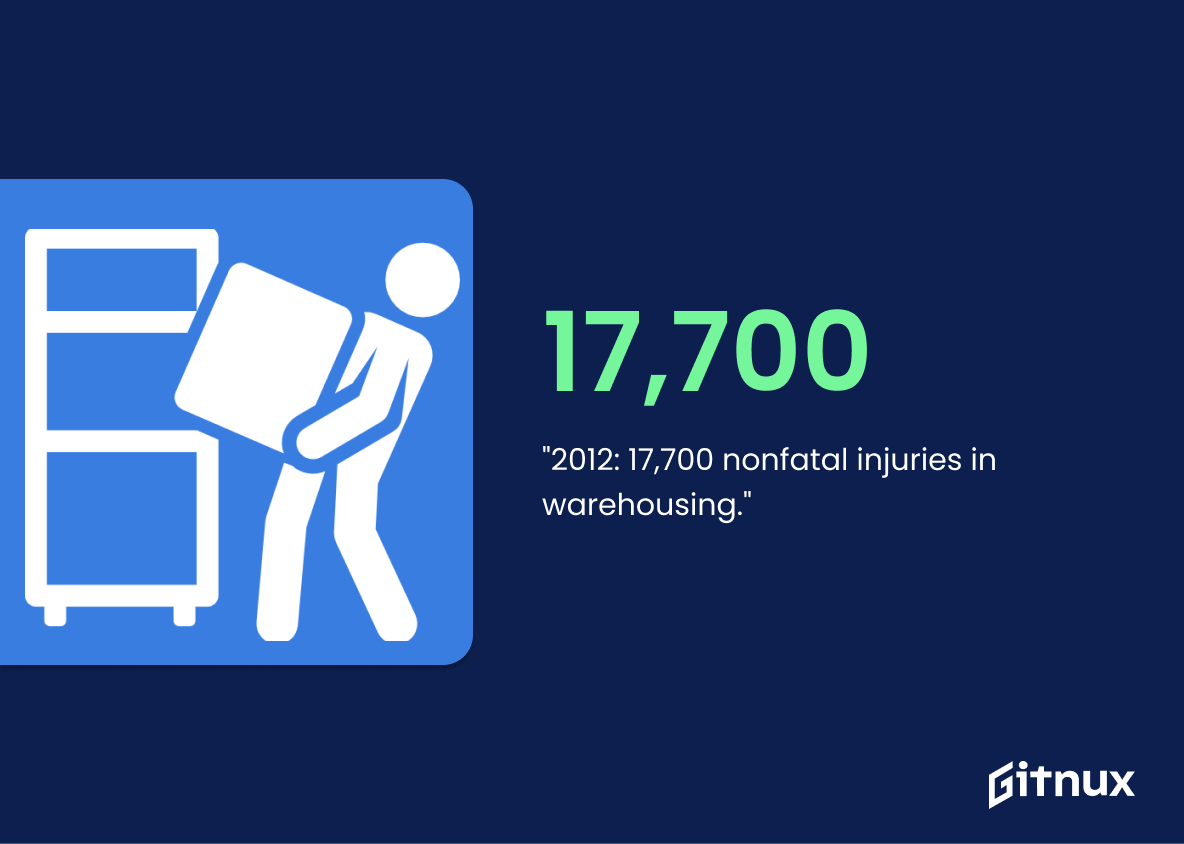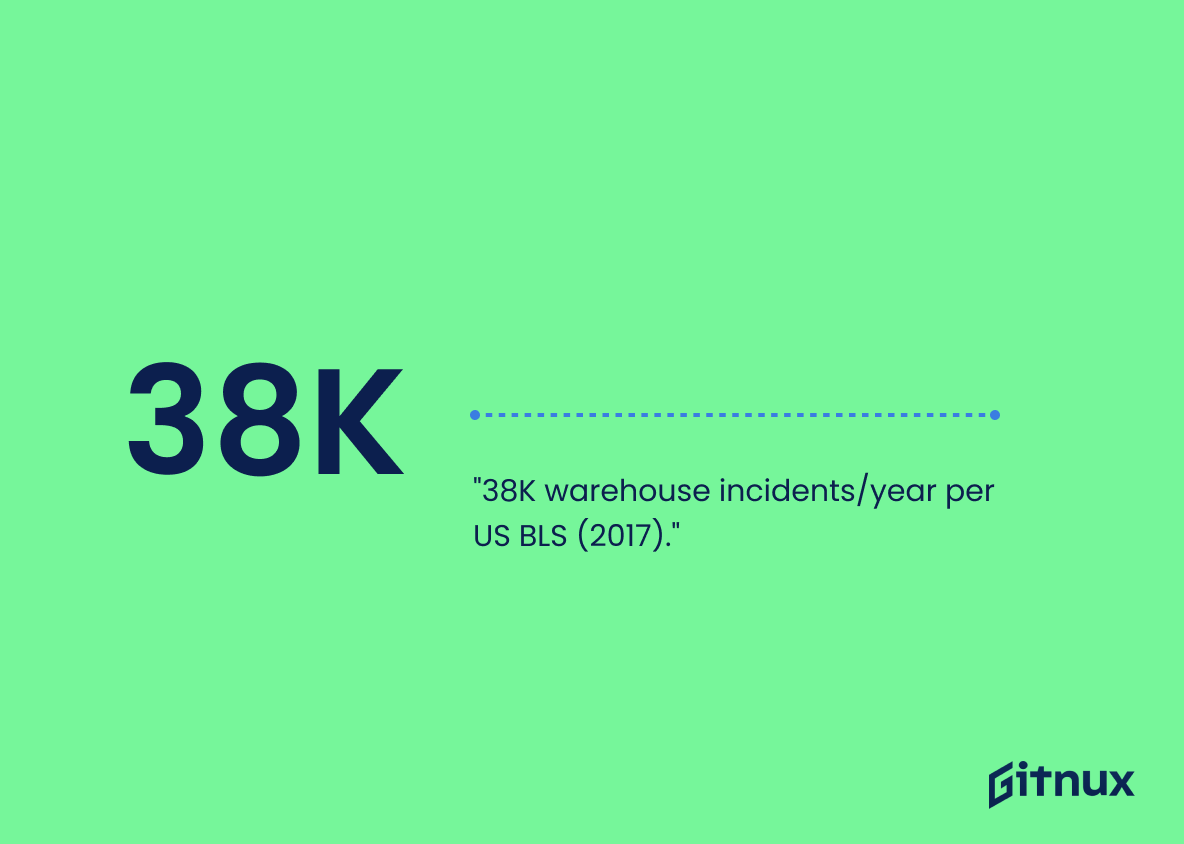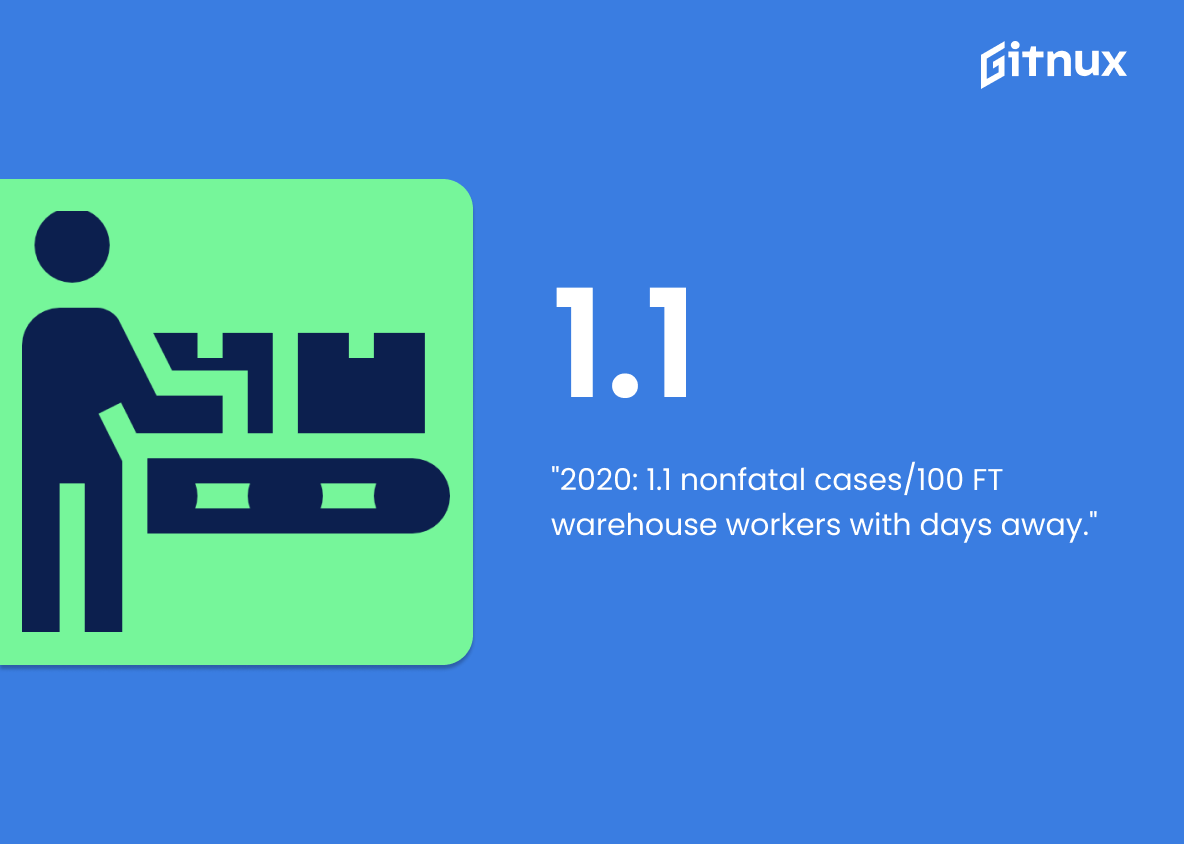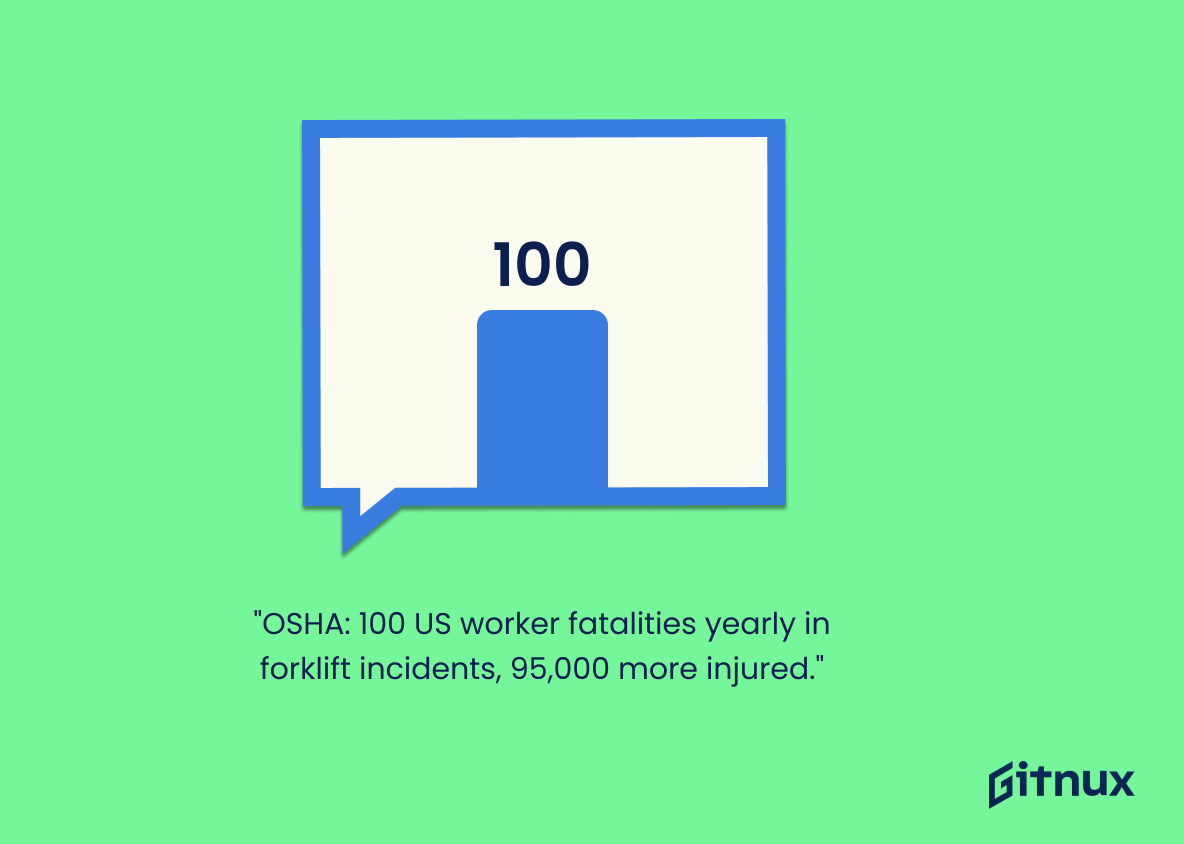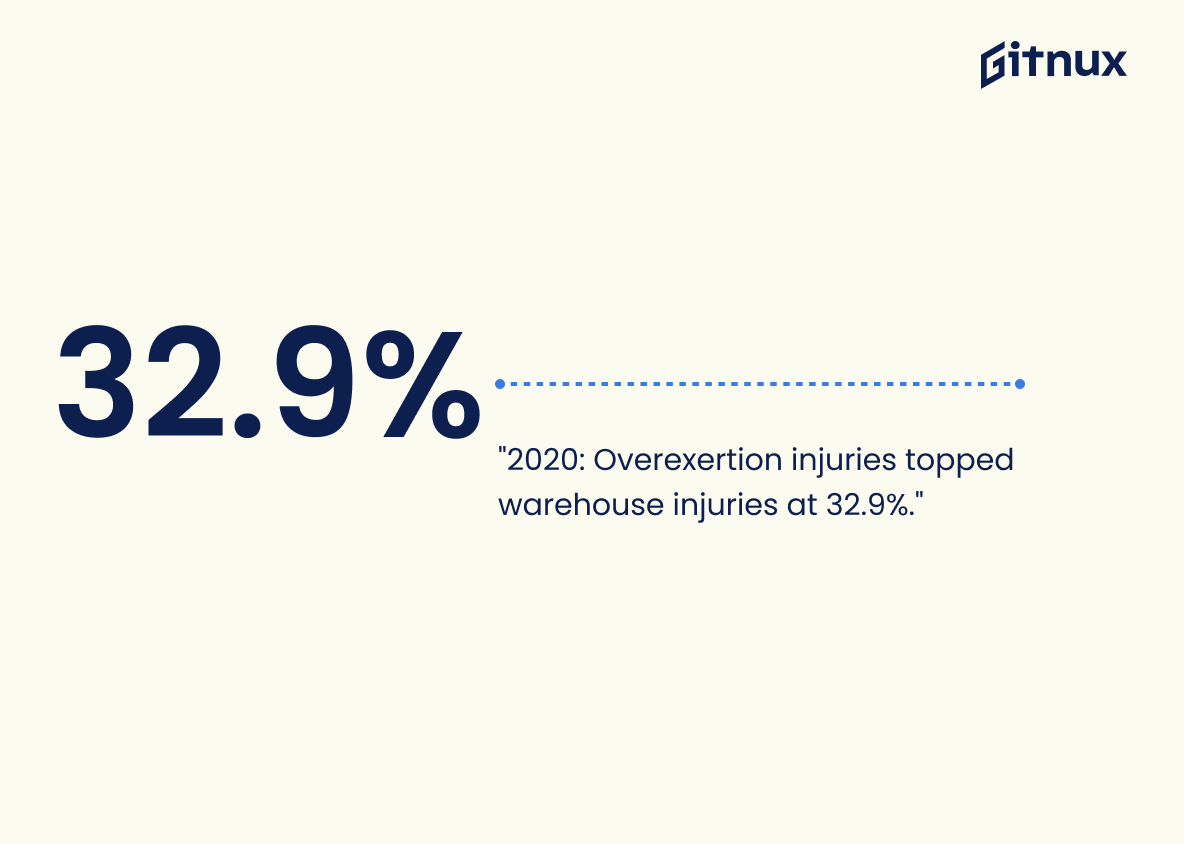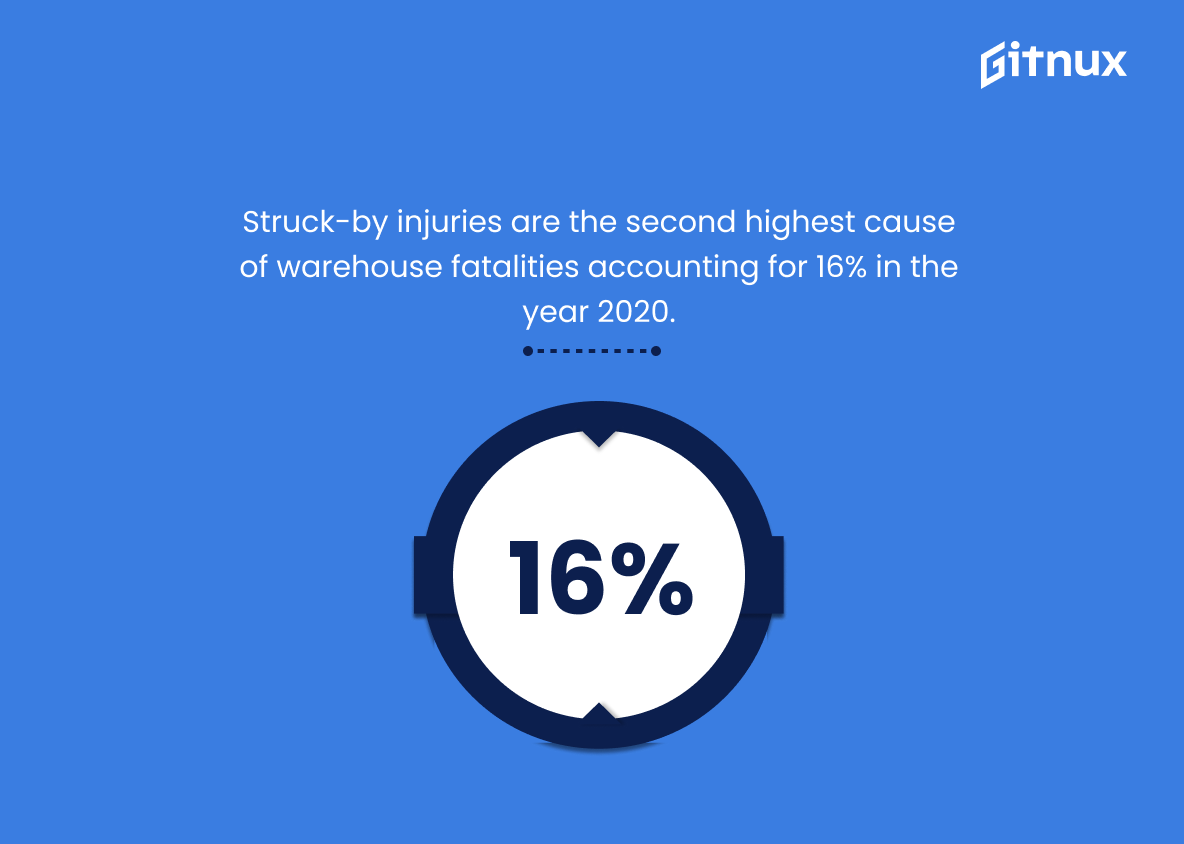Navigating the intricate paths of a bustling warehouse begs for utmost caution and safety. A warehouse, with its vast complex of equipment, towering stacks of products, and swarm of workers laboring round-the-clock, significantly heightens the probability of workplace injuries. This blog post delves deep into the world of warehouse injury statistics, shedding light on the frequency, severity, and types of accidents that occur in these logistical hubs. Beyond just stating facts and figures, it aims to underscore the importance of safety measures and preventative actions that can transform these workplaces into safe havens for the workforce. Prepare to be shocked, educated, and ultimately, motivated to make a positive change as we journey through the sobering reality tucked away in the shadows of warehouses.
The Latest Warehouse Injury Statistics Unveiled
In 2012, the warehousing and storage industry reported 17,700 instances of nonfatal occupational injury and illness.
The statistic vividly uncovers a rather pressing issue that was present in the warehousing and storage industry during 2012. An alarming 17,700 instances of nonfatal occupational injury and illness bear witness to the tangible risks faced by workers in this sector. In a blog post aimed at dissecting warehouse injury statistics, this detail serves as an unmistakable reminder of the areas that necessitate urgent attention. By painting an unflinching picture of the harrowing circumstances under which warehouse professionals operated, this statistic helps spotlight the urgent need for effective safety measures, thus enhancing the relevance and impact of the blog content.
In 2019, there were 5.3 injuries per 100 full-time workers in the warehousing and storage industry.
Highlighting the occurrence of 5.3 injuries per 100 full-time workers in the warehousing and storage industry in 2019 delivers a vivid snapshot of the problem the sector faces in preserving worker safety. This data point serves as a precursor, exploring the depth of the issue, and emphasizing the urgent need for improved precautionary procedures and safety measures in warehouse environments. It underscores the undeniable plight of the workers within these environments and could thus help inspire industry-wide calls for safety protocol innovation. Furthermore, it serves as a benchmark for progress tracking in future safety improvement efforts.
Over 38,000 incidents occur in warehouses annually according to US Bureau of Labor Statistics (2017).
Highlighting the figure from the US Bureau of Labor Statistics (2017) that details more than 38,000 warehouse incidents yearly, paints quite a stark picture. It underscores the pervasive issue of workplace injuries in the warehouse sector. This data point is compelling, serving as a sobering reminder of the gravity of risks that warehouse employees face daily. It underscores the urgent need for improved safety measures and regulations to protect these workers. Consequently, in a blog post about Warehouse Injury Statistics, this statistic elevates the discussion, illustrating the severity of the problem and amplifying the call to action for improved safety guidelines and policies in the warehouse industry.
Up to 80% of accidents involving forklifts result in injury to a pedestrian.
In weaving the narrative of Warehouse Injury Statistics, this statistic provides a poignant lens through which we can examine the real and persistent peril within warehouse environments. The statistic is stark, revealing an alarming pattern – up to 80% of incidents with forklifts claim a pedestrian as their victim. This beckons for our attention, urging us to take a closer look at prevention strategies.
This collision of numbers and reality underscores the high stakes involved in warehouse operations. The ever-present danger underlines the need for stringent safety measures, regular training of personnel, and continuous improvement of procedures to safeguard pedestrians’ well-being. Consequently, this irrefutable figure serves as a resounding call to action that, in any dialogue on warehouse safety, should echo repeatedly.
According to OSHA, slips, trips, and falls cause the majority of general industry accidents, resulting in 15% of all accidental deaths.
Laser-focusing on this statistic is pivotal for the simple reason that it vividly sketches the prevalent threats lurking in a warehouse environment. Under the seemingly peaceful operations lurks danger, with slips, trips, and falls being grim reapers in disguise causing the majority of industry accidents. The sting in the tail is that these seemingly ‘trivial’ accidents account for 15% of all accidental deaths. That’s more than just a number. It’s a chilling reminder of the lurking dangers and the dire need for precautionary measures, safety regulations, and stringent enforcement in warehouses. This alarmingly substantial percentage adds a greater sense of urgency in understanding and rectifying the common pitfalls contributing to these workplace fatalities.
The lost workday rate for nonfatal occupational injuries and illnesses in warehouse workers in 2019 was 98.4.
Emphasizing the severity and relevance of ‘The lost workday rate for nonfatal occupational injuries and illnesses in warehouse workers in 2019 was 98.4’, is crucial in our discussion on Warehouse Injury Statistics. It paints a vivid portrait of the tangible impact occupational hazards exert on warehouse operations. With such a significant loss of productive workdays, this statistic underscores the criticality of improved safety measures and protocols. Moreover, it serves as a robust reminder of the human toll – personal suffering and economic struggles that extend far beyond the warehouse walls. It, therefore, necessitates the pressing need for engaged dialogue, innovative solutions, and proactive prevention strategies in the realm of warehouse safety.
In 2020, there were 1.1 cases of nonfatal occupational injuries and illnesses involving days away from work per 100 full-time warehouse and storage workers.
Highlighting the statistic, “In 2020, there were 1.1 cases of nonfatal occupational injuries and illnesses involving days away from work per 100 full-time warehouse and storage workers,” illuminates a vital aspect of warehouse operations. Warehouses, often seen as the heartbeat of product supply chains, are bustling with activities such as packaging, storing, and dispatching. The movements involved in these tasks carry inherent risks. This data point quantifies those risks, presenting a tangible snapshot of their impact.
By shedding light on the frequency of injuries that warrant time off, the statistic underscores the relevance of safety practices in warehouse operations, a critical focal point for employers, employees, and policy makers alike. Furthermore, the business implications are profound: nonfatal injuries causing absence can interrupt operations, resulting in significant workflow and financial disruptions. These tangible insights can drive urgent conversations and actions around workplace safety, prevention strategies, and overall operational sustainability in the industry.
According to OSHA, every year, about 100 workers in the United States are fatally injured in forklift-related incidents, and approximately 95,000 more workers are injured during forklift operation.
An in-depth dive into warehouse injury statistics uncovers significant yet alarming facts. The spotlight falls on the stark piece of data from OSHA, revealing the grim reality where annually, about 100 workers meet fatal incidents related to forklift operations, shadowed closely by a daunting number of approximately 95,000 workers who suffer injuries. This pressing statistic serves as a loud wakeup call to the hazards lurking in the day-to-day operations of a warehouse. It illuminates the urgent need for stringent safety measures and improved training routines to minimize these incidents. By confronting us with these hard numbers, it spotlights the importance of proper safety protocols in a workplace like a warehouse, where a routine task of operating a forklift can turn deadly or severely life-altering.
In 2020, overexertion injuries were the largest category of injury among warehouse workers at 32.9%.
Emphasizing the statistic that overexertion injuries stood as the leading category of harm, accounting for 32.9% of incidents among warehouse workers in 2020, shines a glaring light on a critical issue within the warehousing industry. It underscores the urgent necessity for more effective safety protocols, advanced training, and ergonomics improvement in the warehouse environment. The magnitude of this number not only punctuates the real risks inherent in warehouse work but also calls for a transformative approach to staff wellbeing, all while laying crucial groundwork for future industry discussions in our blog post about Warehouse Injury Statistics.
About 2% of fatal warehouse injuries are due to exposure to harmful substances or environments.
Highlighting the figure of 2% fatal warehouse injuries attributed to harmful substances or environmental exposures paints a crucial picture on the landscape of warehouse safety. It underscores an aspect of warehouse operations that may often go overlooked in discussions revolving around worker safety, where focus often veers towards more conspicuous threats such as machinery mishaps or falls. Flagging such a statistic serves as a critical reminder that warehouse safety measures need to span beyond the obvious, addressing even ‘invisible’ threats that lurk within the work environment. This data point subtly brings to the forefront the necessity for comprehensive safety protocols that take into account all potential hazards, not merely the most ostensible ones.
Struck-by injuries are the second highest cause of warehouse fatalities accounting for 16% in the year 2020.
Highlighting the significant contribution of ‘struck-by injuries,’ which made up 16% of all warehouse fatalities in 2020, evokes a heightened sense of urgency to address this issue. These numbers are more than just a terrifying scorecard; they underscore an alarming reality that warehouses need to confront. The revelation of ‘struck-by injuries’ standing second in the list of highest causes for warehouse fatalities unveils the gory underbelly of warehouse safety hazards. Discussing this in a blog helps us push for safer approaches, amplify conversations around preventive measures, and encourage stricter safety guidelines implementation. In essence, these figures serve as a clarion call to action, challenging us to transform the narratives around warehouse safety from mere numbers to valued lives.
Men made up 94% of fatal injury victims in the Transportation, Warehouse, and Utilities industry in 2019.
Highlighting the fact that ‘Men represented an overwhelming 94% of fatal injury victims in the Transportation, Warehouse, and Utilities industry in 2019,’ underscores the precarious position males hold within these labor-intensive operations. They are, overwhelmingly, the ones to bear the brunt of serious accidents, even death. This vivid statistic tolls a warning bell not only for workplace safety measures but also for the male workforce who need to be extra careful or demand better safety provisions within these sectors. Consequently, the discussion on warehouse injury statistics will be incomplete without acknowledging this stark gender disparity in fatal injuries.
Conclusion
Warehouse safety should always be the top priority within any operation. The alarming warehouse injury statistics we’ve discussed underline the critical need for comprehensive safety protocols, regular training, and creating a culture of safety. By understanding the causes of these injuries, employers can implement preventative measures to reduce accidents, increase productivity, and ultimately save lives. Rest assured, investing in safety measures not only protects your employees but also contributes to the overall success of your business.
References
0. – https://www.www.bls.gov
1. – https://www.www.jjkeller.com
2. – https://www.www.reliableplant.com
3. – https://www.www.verdantix.com
4. – https://www.www.northeastbattery.com
5. – https://www.www.slic.com
6. – https://www.ohsonline.com
7. – https://www.www.unifirst.com
8. – https://www.injuryfacts.nsc.org
